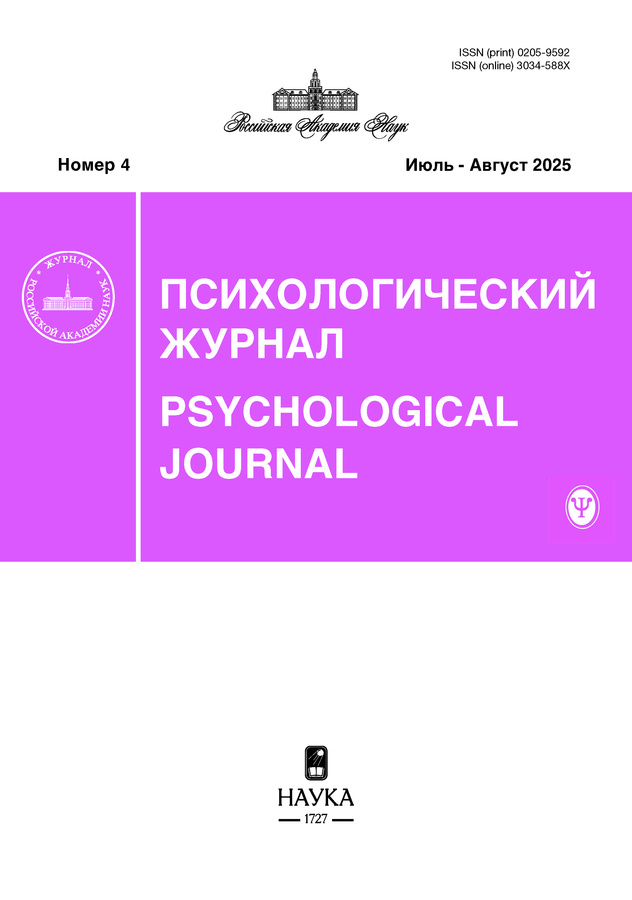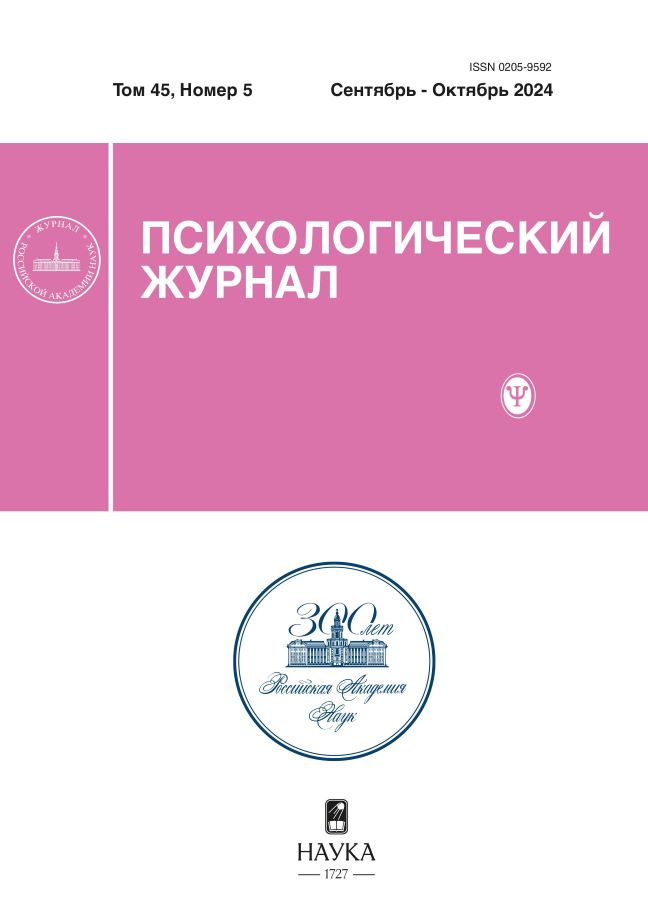Понимание текстов новых форматов. Часть 2. Теоретические модели, их реализация и развитие в зарубежной когнитивной науке
- Авторы: Блинова Е.Н.1, Щербакова О.В.2
-
Учреждения:
- Берлинский университет имени Гумбольдта
- Санкт-Петербургский государственный университет
- Выпуск: Том 45, № 5 (2024)
- Страницы: 34-44
- Раздел: Теоретические и методологические проблемы психологии
- URL: https://rjsocmed.com/0205-9592/article/view/684818
- DOI: https://doi.org/10.31857/S0205959224050052
- ID: 684818
Цитировать
Полный текст
Аннотация
В статье представлены результаты анализа ситуации, сложившейся в зарубежном научном пространстве в области исследования когнитивных механизмов понимания текстов новых форматов. Описано понятие “мультимедийный текст”, являющееся наиболее распространенным и устоявшимся в зарубежной научной литературе, а также перечислены его аналоги. Представлены ключевые теоретические модели (Cognitive Theory of Multimedia Learning и Integrated Model of Text and Picture Comprehension), выступающие основой для формулирования специалистами исследовательских гипотез и конструирования экспериментальных парадигм для их проверки. Краткий обзор результатов метааналитических исследований по проблеме позволил выявить ряд устойчивых паттернов (например, положительное влияние иллюстраций на понимание человеком смысла текста) и модулирующих их условий (например, наличие в тексте внешних средств визуальной навигации или уровень предварительных знаний читателя по теме материала). В завершающей части статьи описаны новые вопросы в области исследования когнитивных механизмов понимания текстов современных форматов, изучение которых в контексте русскоязычного научного дискурса может стать важным шагом на пути интеграции результатов российских исследований в общее поле мировой науки.
Полный текст
Об авторах
Е. Н. Блинова
Берлинский университет имени Гумбольдта
Автор, ответственный за переписку.
Email: blinova_e.n@mail.ru
Кандидат психологических наук, студент магистратуры Института психологии
Германия, 10117, г. Берлин, Унтер-ден-Линден, д. 6О. В. Щербакова
Санкт-Петербургский государственный университет
Email: o.scherbakova@gmail.com
Кандидат психологических наук, ведущий научный сотрудник факультета психологии
Россия, 199034, г. Санкт-Петербург, Университетская наб., д. 7–9Список литературы
- Atkinson C., Shiffrin R.M. The control of short-term memory // Scientific American. 1971. V. 225. № 2. P. 82–90.
- Baddeley A. Working memory // Science. 1992. V. 255. № 5044. P. 556–559.
- Baddeley A.D., Hitch G. Working memory // The psychology of learning and motivation. Ed. Bower G.A. Academic Press, 1974. P. 48–79.
- Barsalou L.W. Grounded cognition: past, present, and future // Topics in Cognitive Science. 2010. V. 2. № 4. P. 716–724.
- Barsalou L.W. Perceptual symbol systems // Behavioral and Brain Sciences. 1999. V. 22. № 4. P. 577–660.
- Cohn N. Visual narrative structure // Cognitive Science. 2012. V. 37. № 3. P. 413–452.
- Dolan R.J. Emotion, Cognition, and Behavior // Science. 2002. V. 298. № 5596. P. 1191–1194.
- England E., Finney A. Interactive Media — What’s that? Who’s involved? ATSF White Paper — Interactive Media UK. 2002. URL: http://www.atsf.co.uk/atsf/interactive_media.pdf (date of access: 17.09.2024).
- Glenberg A.M. Few believe the world is flat: How embodied cognition is changing the scientific understanding of cognition // Canadian Journal of Experimental Psychology. 2015. V. 69. № 2. P. 165–171.
- Guo D., Zhang S., Wright K.L., McTigue E.M. Do you get the picture? A meta-analysis of the effect of graphics on reading comprehension // AERA Open. 2020. V. 6. № 1.
- Hu L., Chen G., Li P., Huang J. Multimedia effect in problem solving: A meta-analysis // Educational Psychology Review. 2021. V. 33. № 3. P. 1717–1747.
- Huang W., Roscoe R.D., Craig S.D., Johnson-Glenberg M.C. Extending the cognitive-affective theory of learning with media in virtual reality learning: A structural equation modeling approach // Journal of Educational Computing Research. 2022. V. 60. № 4. P. 807–842.
- Johnson-Glenberg M.C. Embodied education in mixed and mediated realties // Virtual, augmented, and mixed realities in education. Smart computing and intelligence / Eds. Liu D., Dede C., Huang R., Richards J. Singapore: Springer, 2017. P. 193–217.
- Johnson-Glenberg M.C., Birchfield D.A., Tolentino L., Koziupa T. Collaborative embodied learning in mixed reality motion-capture environments: Two science studies // Journal of Educational Psychology. 2014. V. 106. № 1. P. 86–104.
- Johnson-Glenberg M.C., Yu C.S.P., Liu F. et al. Embodied mixed reality with passive haptics in STEM education: Randomized control study with chemistry titration // Frontiers in Virtual Reality. 2023. V. 4. Art. 1047833.
- Lakoff G., Johnson M. Metaphors we live by. Chicago: University of Chicago Press, 2003. 308 p.
- Lakoff G., Johnson M. Philosophy in the flesh. N.Y.: Basic Books, 1999. 624 p.
- Locke E. Motivation, cognition, and action: An analysis of studies of task goals and knowledge // Applied Psychology. 2000. V. 49. № 3. P. 408–429.
- Mayer R.E. Applying the science of learning: Evidence-based principles for the design of multimedia instruction // The American Psychologist. 2008. V. 63. № 8. P. 760–769.
- Mayer R.E. Cognitive theory of multimedia learning // The Cambridge Handbook of Multimedia Learning / Ed. R. Mayer. Cambridge: Cambridge University Press, 2014. P. 43–71.
- Mayer R.E. Introduction to multimedia learning // The Cambridge Handbook of Multimedia Learning / Ed. R. Mayer. Cambridge: Cambridge University Press, 2014. P. 1–24.
- Mayer R.E. Principles based on social cues in multimedia learning: Personalization, voice, image, and embodiment principles // The Cambridge Handbook of Multimedia Learning / Ed. R. Mayer. Cambridge: Cambridge University Press, 2014. P. 345–368.
- Moreno R. Does the modality principle hold for different media? A test of the method-affects-learning hypothesis // Journal of Computer Assisted Learning. 2006. V. 22. № 3. P. 149–158.
- Moreno R. Instructional technology: Promise and pitfalls // Technology-Based Education: Bringing Researchers and Practitioners Together / Eds. L. PytlikZillig, M. Bodvarsson, R. Bruning. Greenwich, CT: Information Age Publishing, 2005. P. 1–19.
- Noetel M., Griffith S., Delaney O. et al. Multimedia design for learning: An overview of reviews with meta-meta-analysis // Review of Educational Research. 2022. V. 92. № 3. P. 413–454.
- Noetel M., Griffith S., Delaney O. et al. Video improves learning in higher education: A systematic review // Review of Educational Research. 2021. V. 91. № 2. P. 204–236.
- Paivio A. Mental representations: A dual-coding approach. Oxford, England: Oxford University Press, 1986. 322 p.
- Richter J., Scheiter K., Eitel A. Signaling text-picture relations in multimedia learning: A comprehensive meta-analysis // Educational Research Review. 2016. V. 17. P. 19–36.
- Rolfe V.E., Gray D.T. Are multimedia resources effective in life science education? A meta-analysis // Bioscience Education. 2011. V. 18. № 1. P. 1–14.
- Sadoski M. Reading Comprehension is Embodied: Theoretical and Practical Considerations // Educational Psychology Review. 2017. V. 30. № 2. P. 331–349.
- Sadoski M., Paivio A. Imagery and text: a dual coding theory of reading and writing. N.Y.: Routledge, 2013. 168 p.
- Schnotz W. An integrated model of text and picture comprehension // The Cambridge Handbook of Multimedia Learning / Ed. R. Mayer. Cambridge: Cambridge University Press, 2014. P. 72–103.
- Serafini F. Expanding perspectives for comprehending visual images in multimodal texts // Journal of Adolescent and Adult Literacy. 2011. V. 54. № 5. P. 342–350.
- Sweller J. Cognitive load theory, learning difficulty, and instructional design // Learning and Instruction. 1994. V. 4. № 4. P. 295–312.
- Sweller J., Chandler P. Why some material is difficult to learn // Cognition and Instruction. 1994. V. 12. № 3. P. 185–233.
- Sweller J., van Merriënboer J.J.G., Paas F. Cognitive architecture and instructional design: 20 years later // Educational Psychology Review. 2019. V. 31. № 2. P. 261–292.
- van Merriënboer J.J.G., Sweller J. Cognitive Load Theory and complex learning: Recent developments and future directions // Educational Psychology Review. 2005. V. 17. № 2. P. 147–177.
- Werner W. Reading Visual Texts // Theory and Research in Social Education. 2002. V. 30. № 3. P. 401–428.
- Wittrock M.C. Generative processes of comprehension // Educational Psychologist. 1989. V. 24. № 4. P. 345– 376.
- Wong R.M., Adesope O.O. Meta-analysis of emotional designs in multimedia learning: A replication and extension study // Educational Psychology Review. 2020. V. 33. P. 357–385.
- Xie H., Wang F., Hao Y. et al. The more total cognitive load is reduced by cues, the better retention and transfer of multimedia learning: A meta-analysis and two meta-regression analyses // PLoS ONE. 2017. V. 12. № 8. e0183884.
- Young J.Q., Irby D.M., Barilla-LaBarca M.L. et al. Measuring cognitive load: Mixed results from a handover simulation for medical students // Perspectives on Medical Education. 2016. V. 5. № 1. P. 24–32.
Дополнительные файлы














